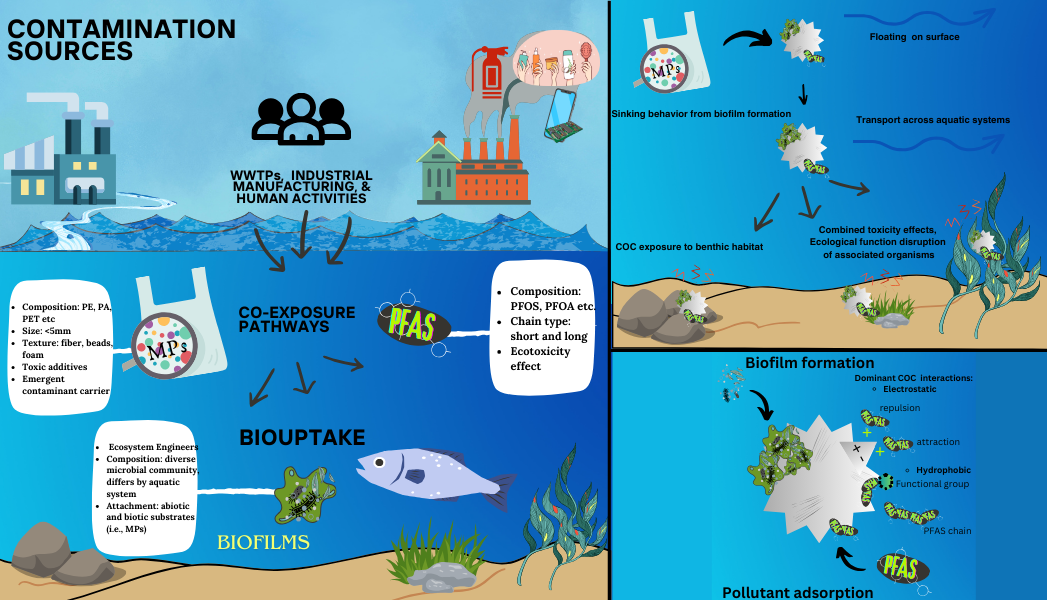Aquatic ecosystem health, and consequently, human well-being, is compromised by contamination associated with anthropogenic activities. These pollutants are transferred to aquatic systems where they become bioavailable for organism uptake. Exposure to harmful chemicals such as the emergent contaminants per- and polyfluoroalkyl substances (PFAS) and microplastics (MPs) can negatively impact ecological functions of aquatic systems and pose harmful ecotoxicological effects to aquatic organisms. Both types of pollutants are introduced to the environment through runoff, product breakdown or wastewater discharge. These are more likely to co-exist during product manufacturing, thus polluting and interacting within aquatic systems. Combined effects of interacting pollutants have the potential to be additive and cause further harm to those exposed, which is pertinent for further research. Persistent and widespread, PFAS have high chemical and heat resistance and are hydrophobic with strong carbon-fluorine bonds, charged with hydrophilic functional groups. Similarly, MPs have a high molecular weight, strong carbon-carbon bonds, hydrophobic surface, and large surface area. While these properties are useful for product longevity and resistance, they promote bioaccumulation and physiological damage to exposed organisms, thus affecting their health and ecological roles. Examining the ecotoxicological effects of PFAS and MPs combined rather than separately provides deeper insights, revealing their combined impact on aquatic life and their co-occurrence in natural environments.
The co-existence of these pollutants and their combined effects on biofilms, an ecological engineering community, have not yet been studied. The ubiquitous biofilms are composed of diverse microbial communities, which contribute to nutrient and biogeochemical cycling, substrate stabilization, and are used for bioremediation and restoration effort strategies. Microbial community composition may be altered by the co-existence of these pollutants, and/or the mechanisms by which they provide ecological functions as ecosystem engineers. Further understanding of these complex interactions between PFAS, microplastics, and biofilms is essential to address co-contamination research gaps such as changes in ecological processes and human health risks and acquire novel knowledge regarding fate, transport, and behavior of associated contaminants, thus addressing co-contamination research gaps.


